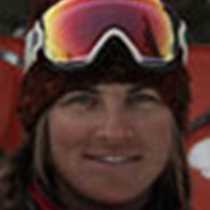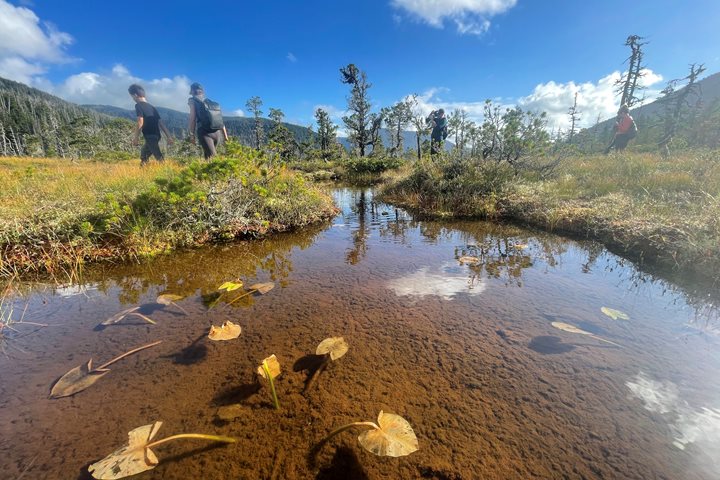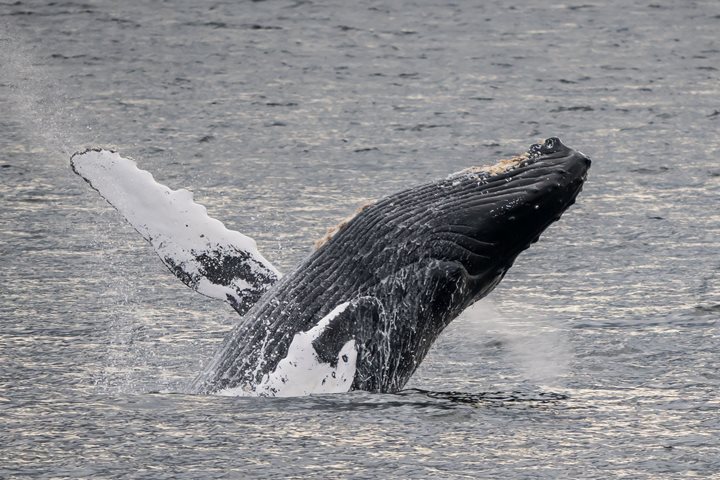Water. It is what makes the temperate forests in Southeast Alaska rain forests, it is what freezes into snowflakes and compacts into glacial ice, it is what supports the web of life that lives in the oceans. Today we got to see, feel, smell, and touch all the waters of Southeast Alaska.
We awoke this morning cruising south in Frederick Sound, on our way to Le Conte Bay. The icebergs and bergie bits floating by hinted at the Le Conte Glacier. The bergs are composed of such a dense glacial ice, they reflect electric blues. The rain from the clouds around us came and went as we cruised through and around the glaciers. When it paused, we could see that the icebergs themselves were also raining, as they melted into the bay. Our upturned faces were greeted by the kiss of the rain that continued to fall from the misty sky.
While we enjoyed a delicious, warm lunch aboard National Geographic Sea Bird, the ship’s crew pulled anchor and we headed back into Frederick Sound and north to Petersburg. Petersburg is a wonderful town, on the island of Mitkof, where the bounty of the sea is the main currency of life. People here are very aware of the health of the ocean and its value to us all. We are fortunate to share their dock for a day while we hike across the way and wander down their streets. And we think eagerly of the crab feast we will have for dinner thanks to the catch of one of the local crabbers.
Some of us headed to Kupreanof Island in the afternoon, for an aerobic walk, and a visit to a muskeg. The muskeg is a very wet and very acidic environment, where not many plants are able to thrive. It leads to stunted trees with character and carnivorous plants. The walk through the forest demonstrated once again the lush variety of green things that come to live in a place that has been nourished for so long by water.







